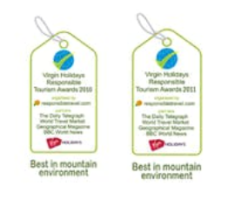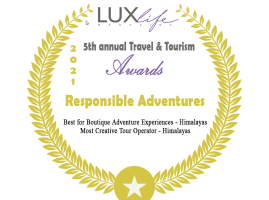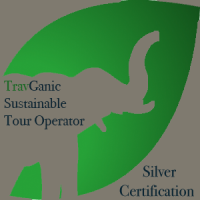Everest Base Camp trek during the winter
Everest Base Camp trek during the Christmas and New Year Holidays.
Stephanie contacted us a few months before about Jessica’s trek to Everest base camp. Stephanie and Jessica did the Mardi Himal trek with us in December 2015 with four other friends from Singapore. They confirmed the dates after their vacation got approved at work.
They arrived in Kathmandu on the night of the 18th of December. We met for breakfast, and they were helped in the hiring of sleeping bags and doing some shopping for trekking gear on the 19th. We parted ways after they were briefed on their departure from the hotel to the domestic airport to catch Lukla’s flight.
Flight to Lukla and trek to Monjo
Before heading to the domestic airport, we met at the hotel restaurant for breakfast. Then, we went through the usual formalities of checking in through the security gate, checking in with the airlines with yet another security check, and waiting for the announced flight. Unfortunately, the flight was delayed by just over an hour, usually in Kathmandu, due to the foggy weather in the morning and air traffic congestion. When our flight was finally announced, we boarded the bus, boarded the aircraft, and took off for Lukla. We arrived in Lukla 25 minutes after takeoff, and it was a smooth flight with clear weather. Upon landing at Lukla, we were met by our support crew, who claimed our luggage and met us at the lodge we stayed in at the end of our Everest region treks. Jess and Steph had hot tea while we sorted out the packs for the porter, etcetera.
Once the porter’s load was organized, Jessica and Stephanie were given a briefing on how to stay safe while on the trail, especially how to avoid being pushed down the path by pack animals and icy parts of the track. We decided to go to Monjo, two hours further than the usual stopping place at Phakding, for several reasons.
- We had arrived with plenty of time, and hiking kept us occupied and warm.
- People from tropical countries at sea level have more difficulties in the cold and altitude, making them slower trekkers than people from Europe, North America, and other countries with four seasons.
We stopped for lunch at Phakding at our staff Sundar’s sister’s eatery for Dal Bhat – a Nepali staple consisting of lentil soup, some vegetables, spicy pickles, and chicken or mutton curry. Our team proceeded towards our final destination, Monjo, after lunch. Some trekkers were on their way back, along with mules that had taken supplies to the lodges that were restocking for the coming spring season.
We reached Monjo around 4.30 pm. The lodge owners had to be phoned as they had gone to the next village of Jorsalle to plant potatoes. We went to our rooms and sorted our gear before coming down to the woodstove’s warmth in the dining room. After dinner, the ladies were briefed on the next day’s program, and we all retired just after 9 pm.
Trek to Namche Bazaar.
We were woken up with a hot cup of ayurvedic drinks. This drink contains ingredients that help energize trekkers; it is anti-inflammatory and eliminates cancerous cells.
The team started our trek at 9 am, stopping at the Sagarmatha (Nepali name for Everest) national park entrance point to register our trekkers. It is a short 3-hour trek to Namche Bazaar from Monjo, with the final two hours a steep uphill climb. There were some icy bits on the trail where streams flowed. The Singaporeans got their first glimpse of Everest halfway through the trek. Namche was reached in time for lunch.
We agreed to meet at 2.45 pm to wander around town before going to our rooms and having hot showers. While walking around Namche Bazaar, we noticed that most shops were shut as the owners had left for ‘warmer’ Kathmandu. We went into the Liquid bar to watch Sherpa, the movie. Unfortunately, the weather had gotten foggy when we came out. We returned to the lodge to have our dinner; as usual, the ladies were briefed on the following day’s program. The plan was to take them to Khumjung village (this is where Sir Edmund Hillary built the first school) for lunch and proceed to Laushasha, similar to Namche. This was again to help the Singaporeans cover some ground to make the next shorter.
Namche to Laushasha
It was a glorious morning with beautiful blue skies and mountain views. We sorted our things in the rooms upon arrival at our stop for the night and gathered in the dining room to congregate around the wooden stove. We had several rounds of hot drinks and dinner and went to bed early again.
Pangboche 3980 m
We started our trek after breakfast with a downhill hike for half an hour to Phungkitanga and checked in with the national park rangers before starting our uphill climb to Tengboche Monastery. Once we walked uphill for a few minutes, we took off our layers and hiked in T-shirts. We arrived in Tengboche two hours later for lunch. We walked around the vicinity and took many photos of Mount Tawache, Nuptse, Everest, Lhotse, Kangtega, and Thamserku. We had a leisurely ninety-minute hike after lunch to Pangboche.
We started to head to our final destination at around 2 pm and reached Pangboche at 3.30 pm. I took a hot shower (the last one for the next five days as we would be at a higher altitude and colder) before the sun went over the hill while it was still warm. The ladies went to bed at 8.30 pm, and we retired at the usual 9 pm.
Amadablam Base Camp 4580 m
We headed out for Amadablam base camp for an acclimatization hike after breakfast. Before reaching ADBC, we first had to walk down the Dudh Koshi river, followed by a mixture of steep and flattish terrain. It was yet another beautiful morning with 360 degrees of mountains, including Everest 8849 m and Lhotse 8501m. We took several photos and ate our packed lunch at base camp before returning to Pangboche. Once again, we had an early night after dinner.
Dingboche 4320 m
We left Pangboche after breakfast and soon arrived at some icy parts on the trail. The ladies were guided through safer parts, even if it meant scrambling off the path on slopes, etcetera, as we firmly believe in safety and prevention rather than cure. We arrived close to the settlement of Shomare, which was pretty icy due to frozen streams. We were guiding our trekkers away from the icy bits when we met an Indian lady who slipped and broke her wrist.
It also happened to be where both phone networks were absent, so their guide had to leave her and her husband for a few minutes until he could get a signal to call for a helicopter to evacuate her. The injured lady had to walk at least 30 minutes before a flat enough area for a chopper to land.
We arrived at Dingboche in time for lunch, went for another acclimatization hike to 4500 m, did some shopping, and stopped at a new Cafe 4410. This new building was abuzz with other trekkers. There were even some in Christmas hats; it was Christmas day. This new cafe was surprisingly warm with its insulated walls and double-glazed windows.
When we returned to our lodge, the heater had been lit in the dining room. We all gathered around it for warmth. An American couple with whom we had flown to Lukla on the same flight, a retired Canadian doctor, and an English lady, but she had gone to bed early. Our Singaporeans had yet another meal prepared by our trekking chef, Sundar. We use superfoods as ingredients and provide specially prepared meals strategically to help our clients get better nutrition and recover from a tiring day of hiking; thus, it has helped them acclimate to high altitudes.
Lobuche 4980 m
The hike to Lobuche from Dingboche begins with a short steep climb to the Stupa. One gets the views of Mount Tawache, Cholatse, Lobuche, Nuptse, the tip of Everest, Lhotse, Choplu, Island Peak, Makalu, and Amadablam from this point. From this point, the trek is a gentle climb before the fast descent to a landslide area where we need to cross the Khumbu river on a wooden bridge (more like old doors) and continue on the landslide area. Then, there is a short ascent to reach Thugla 4620 m. There were parts of the trail that was icy.
We had lunch at Thugla and climbed for one hour on a steep hill until we reached where there were numerous memorials for those who perished on Everest. The hike from this point is a more gentle climb to Lobuche. We did the usual things, such as sorting out our stuff in the room before gathering at the dining room’s heater for the evening.
Our team discussed our trekkers’ condition; they were doing fine, but going to Everest Base camp and Kalapathar would wipe them out completely. I sat down with Stephanie and Jessica and explained this to them. They informed me they needed to reach Everest base camp than Kalapathar, 200 meters higher, with much better views the next day.
Everest Base Camp 5356 m
We had a slightly earlier start to this day as it would be much longer and tiring. The hike begins with a flattish hike for about 45 minutes, followed by a short steep climb above 5000 meters. Next, we walk along a lateral moraine for about ninety minutes before quickly descending to Gorakshep 5180 m.
We had an early/quick lunch, lightened our backpacks, and headed for Everest Base Camp. It was pretty windy, and there were either heading back from or heading to EBC at 1 pm. We advised our trekkers to walk briskly down a hill where it is exposed, and the winds could dislodge some stones when we got close to EBC. Finally, we reached the base camp, where other trekkers took turns taking photos with the Everest Base camp sign. It was such a lovely day to be there with such unobstructed views. It would have been perfect if there had been no wind.
We returned to Gorakshep after taking photos. We were surprised to see some people struggling towards EBC past 3 pm. We reached Gorakshep just before 5 pm. It was a long day, but we had two more long days ahead of us; it made us glad that our trekkers did the sensible thing by choosing not to go up Kalapathar the following day before heading down. We were going to save at least 3 hours by opting out of Kalapathar.
We heard it snowed in the valleys below the altitude of 4000 m, and a couple of helicopters had to turn back because of bad weather. Later that evening, we heard that the temperature at EBC was – 18 and Kalapathar -22 at 5 pm when the sun got over the hill.
Back to Pangboche.
We retraced our steps back to Thugla, where we had lunch on the way up. We stopped there for lunch once again. We were appalled to hear that the guide had brought his client via a shortcut by jumping on rocks to cross the Khumbu river to save a few minutes by avoiding the wooden bridge. Unfortunately, some of the stones had thick ice on them. His client slipped on a rock, broke his hand, and was evacuated by helicopter the previous day.
We took a slightly different route back to Pangboche – via the Pheriche and Khumbu valley. This valley is usually very windy, with a relatively constant solid wind. We were fortunate that the wind was not as active on this day. However, we were hiking at temperatures that were between -10 to -12.
We had to negotiate the icy patches just past Shomare village. We were fortunate that the sun had melted quite a lot of ice during the day, making it easier for us to get through. We reached Pangboche by 4.30 pm, but we felt lazy for a shower as it was still pretty cold. We celebrated that evening with some Vietnamese Pho and spicy pork in Gochujang (spicy Korean paste) sauce for returning safely after reaching our goal of EBC.

Namche Bazaar 3441 m
We retraced our steps to Namche Bazaar with a stop for lunch. First, we saw some blood pheasants on the trail. Then, the ladies went shopping for down trousers – an investment for their future winter trips.
Phakding
We retraced our steps down the steep hill, negotiating the icy bits; they were more difficult in the morning as the sun’s rays had not reached it. We had a short climb to get out of the National park, and all of a sudden, we all had hunger pangs. It must be because we lost altitude, and our appetite sprung back. We decided to stop for an early lunch at Monjo. After that, we headed straight back to Phakding.
We stay in the lodge owned by a Sherpa who carried the IMAX camera in 1996, which shot the Everest IMAX documentary. Before dinner, we watched that movie and chatted with the owner before bedtime.
Lukla
This was a day with just 3 hours trek with a slight uphill climb to Lukla. We aimed to have lunch at Lukla, which we did, and enjoy a fantastic hot shower. Afterwards, we went to town for coffee and shopping before returning to our lodge for dinner. We retired early as we had to be at the airport by 7 am the following day.
Back to Kathmandu
We had an early breakfast while our big bags were taken to the airport to be checked in. We went to the airport, and a couple of hours delayed our flight. Due to Kathmandu’s air traffic, we had to sit inside our aircraft for 30 minutes at Lukla airport’s tarmac. We finally landed in Kathmandu with a further 20 minutes delay in the air. We reached Thamel in time to check in and go out for lunch. We parted ways with a meeting for the day after their departure.
Back home to Singapore.
We met for lunch, did some window shopping, and parted ways as their transportation had been arranged with the hotel to take them to the airport later that night for their homeward journey.
Conclusion.
Usually, during the winter, the trekking trails are empty, but more people choose to go trekking during the Christmas and New Year holidays to avoid spending this period back home. As a result, the trekking routes get a slight surge during this period.
The ‘busiest’ lodge was at Gorakshep, where there were about 20 other trekkers and their support crew. We had the whole guest house to ourselves at Monjo, Laushasha, and Phakding.
Using superfoods has proven to be very helpful in providing better nourishment to trekkers. In the past, we have had South East Asian trekkers who did finish high-altitude treks but were utterly exhausted. Since we introduced the Wellness factor to our trekking vacations in the past three years, our clients have tremendously helped our clients. However, superfood needs to be taken with caution as it detoxifies; if you use the wrong superfood or provide too much, the detoxification might appear like diarrhoea. Once again, our Wellness trekking adventure has proven to be a success.
We did another trek to EBC with a twist in December 2019. Read more
Check out our Trekking packages for Nepal, Bhutan, India, and Tibet.
















